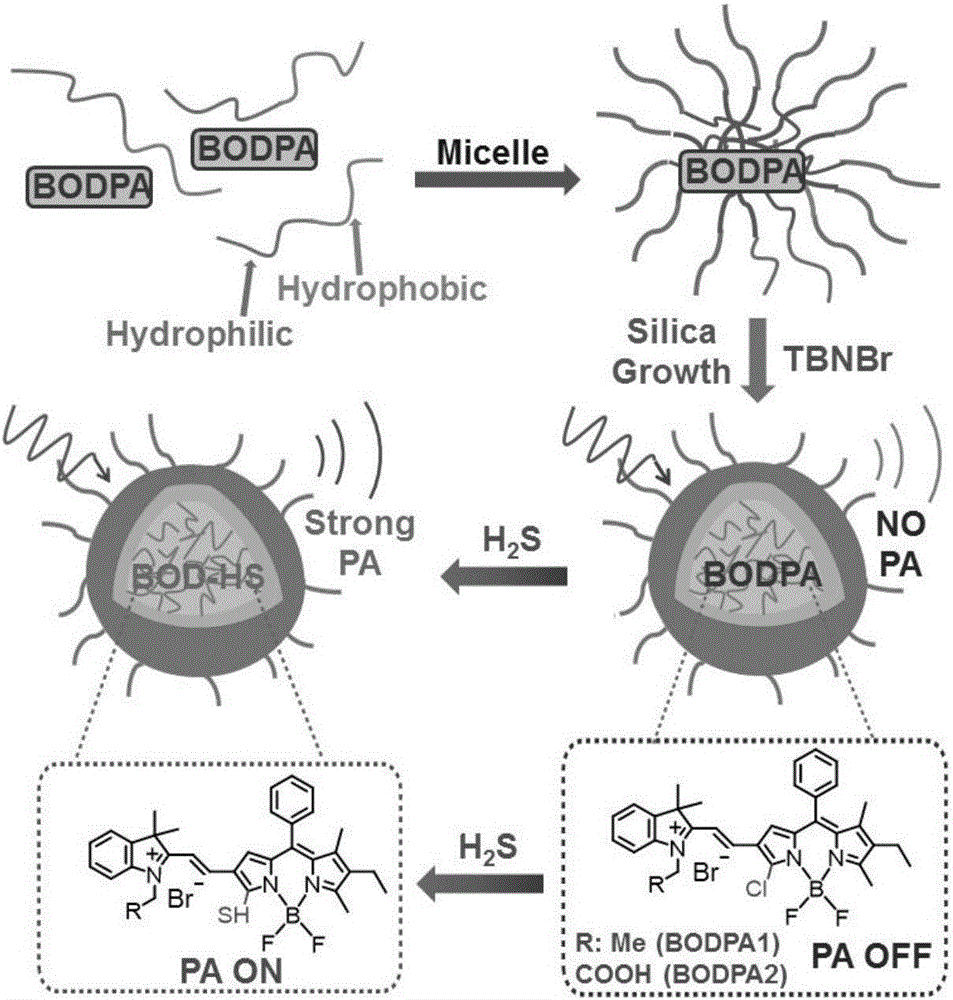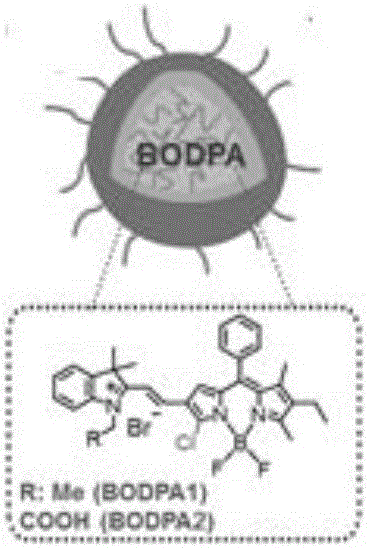Organic silicon nanometer dye probe for detecting endogenous H2S, as well as preparation method and application thereof
An organosilicon and endogenous technology, applied in the direction of organic dyes, methine/polymethine dyes, chemical instruments and methods, etc., can solve the problems of limited detection range and poor water solubility, and achieve the goal of improving water solubility and stability Effect
- Summary
- Abstract
- Description
- Claims
- Application Information
AI Technical Summary
Problems solved by technology
Method used
Image
Examples
Embodiment 1
[0038] The synthesis of embodiment 1 compound BODPA2
[0039] N 2 Under gas protection, A (386mg, 1mmol) and B (298mg, 1mmol; R=COOH) were added to 30ml of absolute absolute ethanol and refluxed for five hours, cooled, spin-dried the solvent, purified by column chromatography to obtain 466mg of a black solid, the yield 70%. (A is self-made in this laboratory, the self-made method refers to the patent number: ZL 201410766204.6, B is purchased)
Embodiment 2
[0040] Synthesis of Example 2 Compound Si@BODPAs
[0041]BODPAs (0.3 μmol) were quickly added to 3 mL of 0.85N dilute hydrochloric acid solution in which mPEG-DSPE (19.1 mg) was dissolved, ultrasonicated for 10 minutes, then a certain amount of TBNBr silane reagent was added, stirred for 24 hours, and dialyzed for two days to obtain photoacoustic probe needle solution.
[0042] TBNBr weighed 5.73mg (TBNBr / mPEG-DSPE=30 / 100, w / w), 17.19mg (TBNBr / mPEG-DSPE=90 / 100,w / w), 34.38mg (TBNBr / mPEG-DSPE=180 / 100, w / w) and 51.57 mg (TBNBr / mPEG-DSPE=270 / 100, w / w), resulting in Si@BODPA30, Si@BODPA90, Si@BODPA180 and Si@BODPA270.
PUM
 Login to View More
Login to View More Abstract
Description
Claims
Application Information
 Login to View More
Login to View More - R&D
- Intellectual Property
- Life Sciences
- Materials
- Tech Scout
- Unparalleled Data Quality
- Higher Quality Content
- 60% Fewer Hallucinations
Browse by: Latest US Patents, China's latest patents, Technical Efficacy Thesaurus, Application Domain, Technology Topic, Popular Technical Reports.
© 2025 PatSnap. All rights reserved.Legal|Privacy policy|Modern Slavery Act Transparency Statement|Sitemap|About US| Contact US: help@patsnap.com



